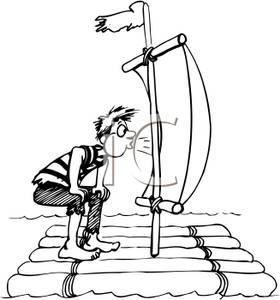For the A-tech, they said they spent 1.2 millions euros in R & D. That is a lot of money thrown at it. You d hope the brake think is really helping and is not just a commercial gimmick .
Welcome guest, is this your first visit? Create Account now to join.
Welcome to the NZ Hunting and Shooting Forums.
Search Forums
User Tag List
+ Reply to Thread
Results 46 to 60 of 84
-
26-09-2017, 11:08 PM #46Member

- Join Date
- Jun 2013
- Location
- Middle Earth
- Posts
- 4,548
-
-
27-09-2017, 05:23 AM #47
Too hard to effectively measure & the results would be embarrassing for any of the X% claims from manufacturers about recoil reduction.
Interestingly in the article they never said where they tested the suppressors, also some of the manufacturers weren't aware either until after the fact.Contact me for reloading components, brass, projectiles, powder, primers, etc
http://terminatorproducts.co.nz/
http://www.youtube.com/user/Terminat...?feature=guide
-
27-09-2017, 06:15 AM #48Member

- Join Date
- Jan 2013
- Location
- Home - mainland nz, actual - Auckland
- Posts
- 5,455
@Kiwi Greg , you reckon you could do this with one of your brakes and a suppressor?
Please excuse spelling, as finger speed is sometimes behind brain spped........ Or maybe the other wayy.....
-
27-09-2017, 06:40 AM #49Member

- Join Date
- Jul 2013
- Location
- Otago
- Posts
- 316
Do you think a large part of the perceived reduction of recoil on a suppressed firearm might also be due to there being a big(ger) weight on the end of the muzzle, which would make a significant reduction in muzzle jump?
-
27-09-2017, 08:09 AM #50"Here's the deal I'm the best there is. Plain and simple. I wake up in the morning and I piss excellence."
-
27-09-2017, 01:57 PM #51
Really? You've put up a fair number of posts presenting assessments of recoil for brakes over the past few years. Surely something similar could be applied to suppressors? The low-friction recoiling sled approach, plus a lightweight accelerometer to capture the shape of the recoil impulse maybe? If some assessment of the repeatability of the testing could be demonstrated and give a handle on the uncertainty in the results there shouldn't be much reason for complaint... embarrassment as you say.
Other than my gripe (unfounded it now looks like), about A-tec, I thought the suppressor review was just the sort of data-driven comparative testing that the magazines should be attempting on readers' behalf, so kudos to Rod & Rifle. Much more informative than the one-off product reviews often seen along the lines of... "the suppressor reduced the blast a lot.... it got hung up in tight bush less than my regular larger suppressor... " etc.
From the review there seemed to be two clear product niches, perhaps best described as being occupied by DPT and Hardy Engineering respectively. Would it be fair to say that these currently appear to be best-in-class on the parameters covered in the article or have I got it completely wrong? Would adding in recoil reduction unseat these two brands? Is it possible to achieve a satisfactory compromise on all parameters in a single offering? The R&R article already presents a lot of data to consider.Last edited by Puffin; 27-09-2017 at 02:18 PM.
-
27-09-2017, 06:25 PM #52Contact me for reloading components, brass, projectiles, powder, primers, etc
http://terminatorproducts.co.nz/
http://www.youtube.com/user/Terminat...?feature=guide
-
27-09-2017, 09:06 PM #53Member

- Join Date
- Feb 2012
- Location
- hokitika
- Posts
- 1,476
Dont waste your time chasing every last fps, it doesnt matter in the real world, it wont make a difference, all it will do is cause head aches and frustrations. And dont listen to silly old cunts
-
28-09-2017, 07:09 AM #54Member

- Join Date
- Jul 2013
- Location
- Otago
- Posts
- 316
-
28-09-2017, 10:07 AM #55Member

- Join Date
- Nov 2014
- Location
- Central Otago
- Posts
- 2,343
4 bloody pages of theoretical bumph! The question was about internal muzzle brakes in suppressors. The answer is that all suppressors have a recoil reducing effect by virtue of their baffles providing an impingment surface to the muzzle gases, tending to put forward pressure in the suppresor. Over-barrel suppressors do have an effective muzzle brake system, which is the internal part that screws onto the barrel. This is a muzzle brake in basic design and is used to divert the muzzle gases into the rear part of the suppressor (where they expand and cool at a much lower pressure). The baffles in the front part play a much lesser role in reducing recoil as the gas pressures are much lower. The internal muzzle brake in over-barrel units is usually efficient enough to counteract the bolt cycling in semi-autos, requiring some tuning of the gas system for reliability. For the lesser informed, muzzle brakes work by trying to pull the firearm forward when the expanding muzzle gases strike the forward surfaces of of the vents. Vents in the top also help to counter muzzle rise in the same manner. That is all there is to it.
There has been more psuedo-scientific garbage written (and claimed) about suppressors than you can shake a stick at. I have commercially designed and manufactured thousands of suppressors for all types of firearms since the early 1970's. Suppressors rely on only three factors for efficient operation; accurate alignment with the bore, an efficient (but simple) baffle design, and sufficient internal volume to contain most of the muzzle gases. Any claims outside of these parameters are dubious at best!
-
28-09-2017, 10:21 AM #56Contact me for reloading components, brass, projectiles, powder, primers, etc
http://terminatorproducts.co.nz/
http://www.youtube.com/user/Terminat...?feature=guide
-
28-09-2017, 10:35 AM #57Member

- Join Date
- Nov 2014
- Location
- Central Otago
- Posts
- 2,343
-
28-09-2017, 10:35 AM #58
I have a JP AR15 and recently bought an NEA carbine off a forum member with a Gunworks Maximus suppressor fitted.
The JP is a heavy rifle with an 18" heavy contour barrel and I have an overbarrel suppressor that fits back to the gas block and in turn has a smaller diameter to fit thru the JP handgaurd.
It is a few inches longer than the maximus.
And about 1/2-3/4 the diameter.
The NEA, surprisingly is noticeably quieter (with a shorter barrel) and seems to settle back faster than the JP when shooting fast or double tapping Ipsc targets.
Just a quick observation with no tech data to back it up but it to me it seems that internals and size of a suppressor can make a difference.
Both suppressors have integral breaks and same stock fitted.
Without the suppressor and with the JP break fitted the JP shoots quicker again.
Sent from my SM-G935F using TapatalkDo what ya want! Ya will anyway.
-
28-09-2017, 10:45 AM #59Contact me for reloading components, brass, projectiles, powder, primers, etc
http://terminatorproducts.co.nz/
http://www.youtube.com/user/Terminat...?feature=guide
-
28-09-2017, 11:03 PM #60
@gundoc,
With all respect for your conclusion which I can only agree with, you are harsh on other contributors, even arrogant... and in karmic fashion immediately plunge neck-deep into the bog of your version of Munchausen's pigtail self-lift.
To paraphrase your first bit, when a car passenger kicks the dashboard the car pulls forward. We all know this is false. The explanation is that the passenger supports his back against his seat, so the effect of his forward blow against the dashboard is entirely cancelled by his rearward action against his seat as both objects are fixed to the car. It must be understood that the gun and silencer are attached to each other. They are a single unit; the silencer is part of the gun. A blow from a gun against itself (in the form of impingement of its gases against its own baffles) will not pull it forwards.
Astronauts on a spacewalk similarly can not propel themselves through space by slapping their own butts.
 An itch ... is ... a desire to scratch
An itch ... is ... a desire to scratch
Similar Threads
-
MISSING DOGS
By EeeBees in forum Trial, Pedigree and Bird DogsReplies: 20Last Post: 03-03-2015, 10:18 PM -
Missing Grizzly
By Dundee in forum Outdoor TransportReplies: 0Last Post: 29-11-2014, 04:56 PM
Tags for this Thread
Welcome to NZ Hunting and Shooting Forums! We see you're new here, or arn't logged in. Create an account, and Login for full access including our FREE BUY and SELL section Register NOW!!





 62Likes
62Likes LinkBack URL
LinkBack URL About LinkBacks
About LinkBacks



 Reply With Quote
Reply With Quote




Bookmarks